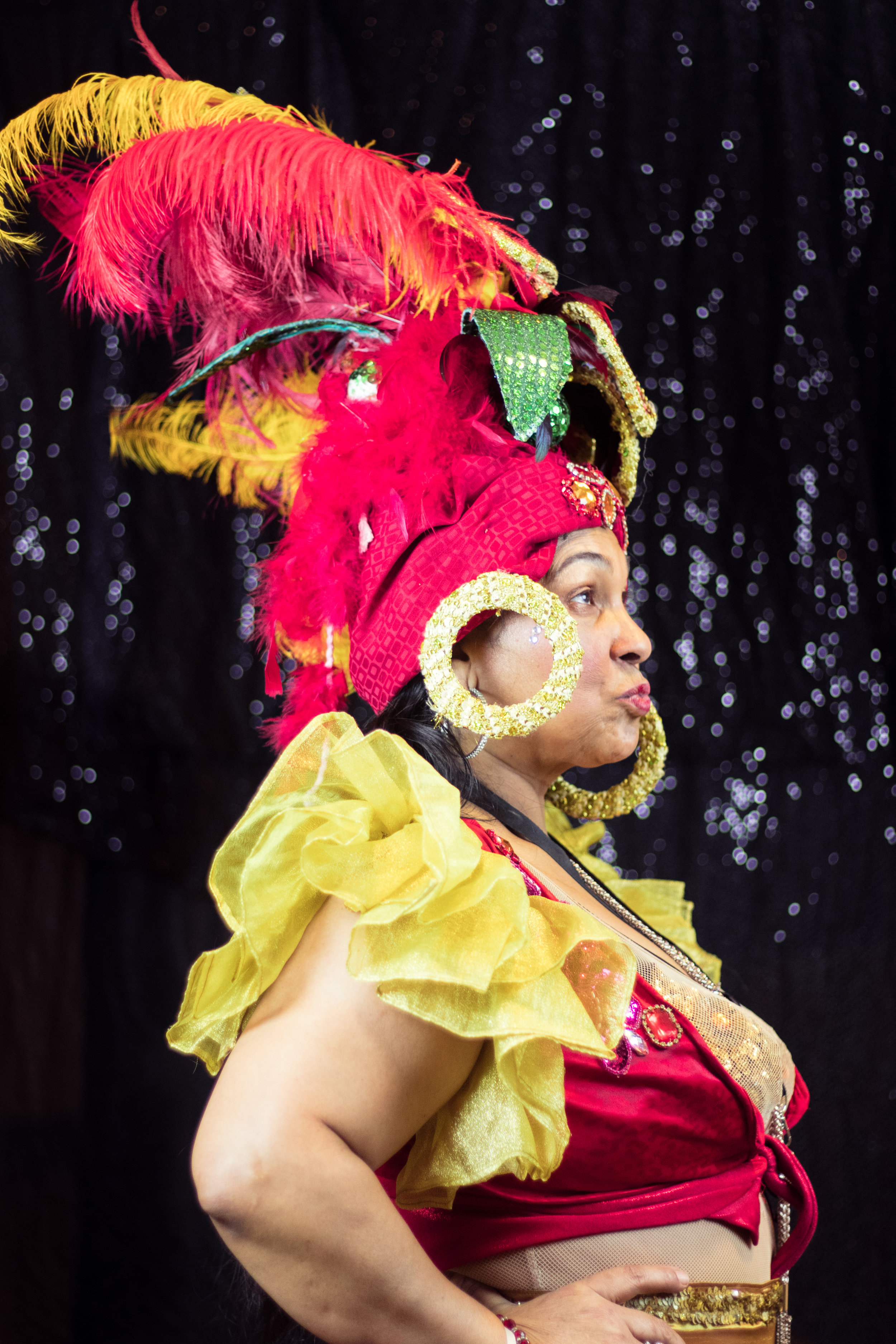Algo Más Que Carnaval (“Something More Than Carnaval”)
WRITTEN BY KAT HERNANDEZ
PHOTO BY MARYAM SAAD
February was a month of two-fold importance for Dominican-Americans. While America celebrated Black History Month, back in our motherland, our families and communities celebrated 175 years of independence. And like so many aspects of our identity, we are caught in the middle.
“Es el mes entero,” said Derrick Vasquez, president of Baruch College’s Dominican Student Association. “In the Dominican Republic, we celebrate our independence all month long. So for us here, we’re celebrating it interchangeably with Black History Month.”
Baruch College’s Dominican Student Association, Asociación Estudiantil Dominicana (ASEDOM), brought forward this celebration on March 7th with their annual Carnaval event. Carnaval, the celebration of both Holy Week and Dominican Independence, is evidence of the multiple layers of Dominican identity, with its roots in both African culture and post-independence celebration.
Celebrated years before the country’s independence, Carnaval finds its origins in African slaves that would mimic and mock the acts of their slave masters. According to Dominican folklore, on the days leading up to Lent and Holy Week, European slave owners would commit sinful acts in public as a way to have something to be repentant for during the fasting period of Lent. As a response to the hypocrisy that they would see, slaves would mimic this behavior during these days when they were included in the sins of their masters. Overtime the act became a festival of sorts and has now become a nationwide parade.
Carnaval takes over the Dominican Republic in an massive display of colors and festivities. The people dress up in traditional clothes or as diablo cojuelos, caricature-like devils with ornate and loud costumes that dance down the streets in parades. They derive from Castilian folklore that dates back from before the country’s independence. The persona was brought to the island through the play “El Diablo Cojuelo” by Luis Velez de Guevara, a Spanish playwright and dramatist, but has been favored by witches and santeros for the mischief and playfulness that it represents.
Diablo cojuelos have evolved into a more colorful display than from de Guevara’s original presentation. Generations of families in the Dominican Republic have dedicated themselves to dressing in elaborate and colorful figures with 3-foot high horns that are decorated with patterns and textures. They parade the streets with long “tails,” made from thick leather or hay, with a firecracker attached to the end, making a loud cracking sound whenever slapped against the ground.
“As a kid, growing up you don’t know what these things mean,” said Vasquez. “I used to just be scared of these random people dancing around and dress up. I didn’t know what they meant to our culture and our values.”
Carnaval mixes much of the Dominican Republic’s different religious backgrounds as well. With its placement a week before the start of Lent, it is seen as the preparation for the Christian holiday. At the same time, however, it’s also seen as a pagan ritual for practitioners of voodoo and Santeria since many components hold non-Christian but spiritual aspects to them. The diablo cojuelos are a perfect example of this.
Alongside these andulleros, the name given to a group of diablos, are the diverse array of Dominican dancers.
“So with this new [generation] coming that are recognizing their African roots, in D.R we’ve always had our African roots,” said Yvonna Perez, a dance instructor who specializes in typical Dominican folk dances. She and her group of dancers performed alongside the diablos at ASEDOM’s Carnaval event, demonstrating dances like los palos that have clear African roots. “A lot of it started with our music. I like to show my dancers what are our lost African dances and dance steps.”
Perez shared her frustration with the lack of knowledge of our African ancestry in terms of dance.
“There’s la mangulina, and as well you have machaco, los palos. You have pri-pri, which all incorporate our African roots with the drums, the African drums. The way you move your hips. The way you move your shoulders,” continued Perez. “People don’t even know these dances exist. You probably mention these dance styles and people ask ‘what is that?’”
Many Afro-Dominicans from the current generation are taking steps forward in trying to educate Dominicans and non-Dominicans on the reality of blackness within the island; however, there are those who feel like more has to be done.
“I’m really proud to celebrate Black History Month, and a lot of times I get that second look of ‘oh, why are you celebrating Black History Month,’” said 30-year-old teacher and dancer Daniel Estrada. He is a light-skinned Dominican that identifies as Black and has felt the need to justify his reasons for celebrating Black History Month. “Dominicans are kind of at this crossroads where you don’t really know what race to identify with ‘cause you don’t really fit into any kind of norm.”
So much of our independence is celebrated in the sentiment of being grateful for what has been done in the Dominican Republic’s past and all of the struggles that have been overcome; however, there is still so much room for effort to accept and truly embrace our African identity and step into our blackness.
“We’ve come a really long way as a nation and as people,” said Estrada. “But just because we’ve come a really long way doesn’t mean that we don’t have a lot of growing to still do. Let’s not shy away from the current struggles we still have and the conversations we still need to have.”
The indigenous Taínos called the island Quisqueya. The Spanish dubbed it Hispaniola. African slaves never had the chance to name the place that would eventually become their home, so in their memory and in the spirit of our independence, we call it home.




